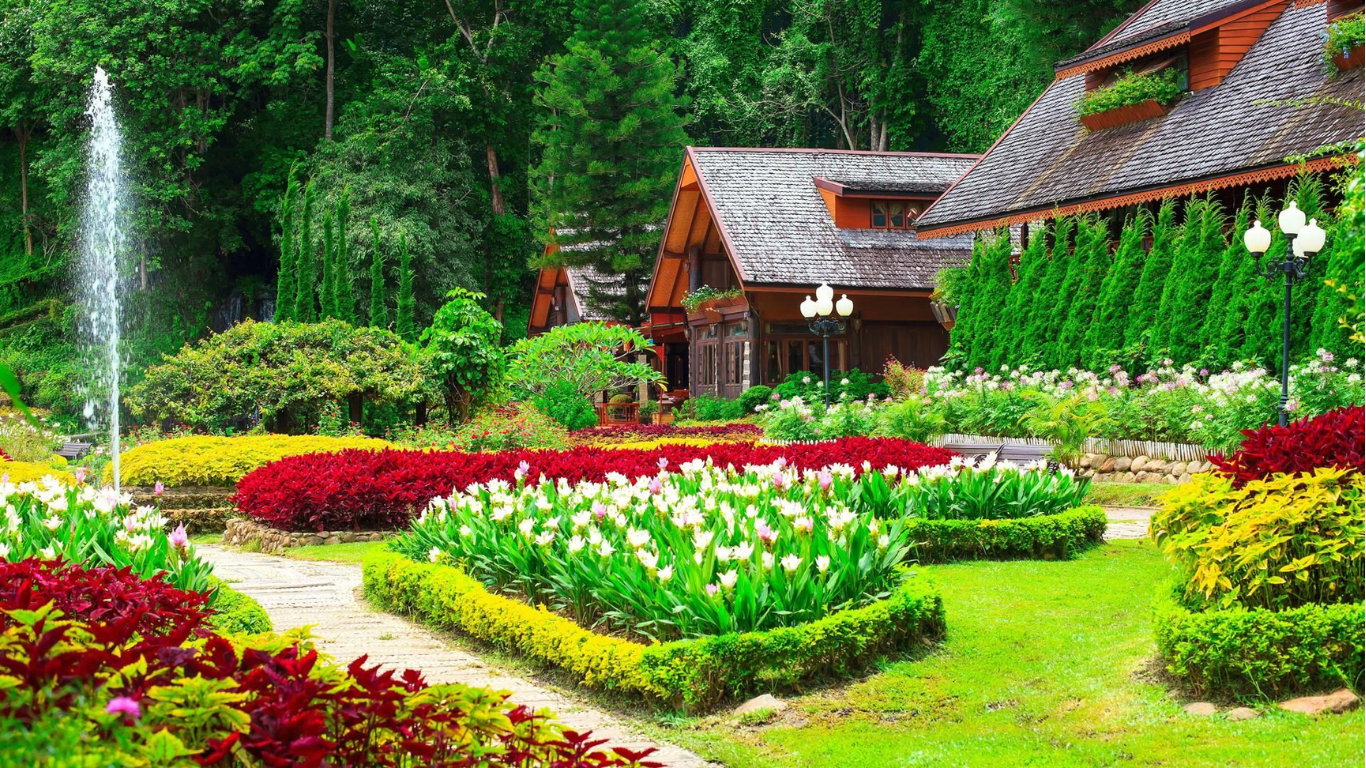A sustainable garden is an excellent way to create an eco-friendly outdoor space that not only looks beautiful but also helps support the environment. Whether you’re a seasoned gardener or just starting out, making your garden sustainable can help reduce waste, conserve resources, and provide a thriving space for plants and wildlife. In this guide, we’ll explore key steps and ideas on how to build a sustainable garden that grows green and thrives.
Choose Native Plants
One of the most effective ways to make your garden sustainable is by choosing native plants. Native plants are well-adapted to the local climate and soil conditions, which means they require less water, fertilizer, and pesticides to thrive.
Benefits of Native Plants
Native plants provide essential support to local wildlife, including birds, bees, and butterflies. They promote biodiversity, helping to sustain healthy ecosystems. Native species are also generally more resistant to pests and diseases, making them a low-maintenance choice for your garden.
Conserve Water
Water conservation is a fundamental aspect of sustainable gardening. Reducing water use not only saves resources but also helps maintain healthy soil and plants.
Install a Rain Barrel
Collecting rainwater in a rain barrel is an easy way to water your garden sustainably. The collected rainwater can be used to irrigate plants during dry spells, reducing the need for municipal water.
Use Mulch to Retain Moisture
Adding mulch to your garden beds helps retain moisture in the soil, reducing the need for frequent watering. Mulch also helps prevent weeds and improves soil quality over time.
Create Compost
Composting is an excellent way to reduce waste and enrich your garden soil. By composting kitchen scraps, garden trimmings, and other organic materials, you can create nutrient-rich compost that helps your plants thrive naturally.
Start a Compost Bin
You can easily start a compost bin in your backyard. Simply add a mix of green materials (e.g., vegetable scraps, grass clippings) and brown materials (e.g., leaves, branches) to your compost pile. Turn the pile occasionally to aerate it, and in a few months, you’ll have compost to use in your garden.
Use Natural Pest Control
Avoiding chemical pesticides is essential to maintaining a sustainable garden. Chemical pesticides can harm beneficial insects, contaminate the soil, and negatively impact the environment.
Attract Beneficial Insects
Attract beneficial insects like ladybugs and lacewings, which naturally help control garden pests. Planting flowers such as marigolds, lavender, and sunflowers can attract these helpful insects to your garden.
Create Homemade Pest Remedies
Homemade remedies, such as a mixture of water and soap or garlic spray, can effectively keep pests away without harming the environment. These natural alternatives are safer for plants, pets, and beneficial insects.
Reduce Lawn Size
Traditional lawns require a lot of water, fertilizer, and maintenance. Reducing the size of your lawn and replacing it with native grasses, ground covers, or flower beds can help make your garden more sustainable.
Consider Alternative Ground Covers
Instead of a conventional lawn, consider low-maintenance ground covers like clover or creeping thyme. These plants require less water, and they also improve soil quality and attract pollinators.
Promote Wildlife Habitat
A sustainable garden is one that supports wildlife. By creating a habitat that provides food, water, and shelter, you can attract and support a variety of species.
Add Birdhouses and Bee Hotels
Adding birdhouses and bee hotels to your garden helps provide nesting spots for birds and solitary bees. These structures are easy to build or buy and are a great way to support local wildlife.
Provide a Water Source
Adding a birdbath or small water feature can help attract birds and other wildlife to your garden. Make sure to keep the water clean to prevent the spread of diseases.
Use Sustainable Garden Materials
The materials you use in your garden also play a role in sustainability. Choosing natural, recycled, or repurposed materials can help reduce waste and the carbon footprint of your garden.
Use Reclaimed Wood for Garden Beds
Using reclaimed wood for raised garden beds or pathways is an eco-friendly option that gives materials a second life. Pallets, old fence panels, and other discarded wood can be repurposed into garden structures.
Opt for Eco-Friendly Pots
When selecting pots for plants, choose options made from natural or recycled materials. Terracotta, biodegradable pots, and even DIY planters from repurposed items like old tires or crates are all sustainable alternatives to plastic.
Practice Crop Rotation
Crop rotation is a sustainable gardening technique that involves growing different types of plants in the same area each season. This helps maintain soil fertility, prevents the build-up of pests and diseases, and reduces the need for chemical fertilizers.
Rotate Vegetable Crops Annually
If you grow vegetables, plan to rotate them each year. For example, avoid planting tomatoes in the same spot two years in a row. This helps prevent soil nutrient depletion and reduces the likelihood of pests affecting your crops.
Grow Your Own Food
Growing your own fruits, vegetables, and herbs is one of the best ways to create a sustainable garden. Not only does it reduce your carbon footprint by eliminating the need for transporting store-bought produce, but it also provides you with fresh, healthy food.
Start with Easy Vegetables
If you’re new to gardening, start with easy-to-grow vegetables like tomatoes, lettuce, or peppers. These plants are low-maintenance and can yield a rewarding harvest in a short time, making your gardening journey enjoyable and successful.





